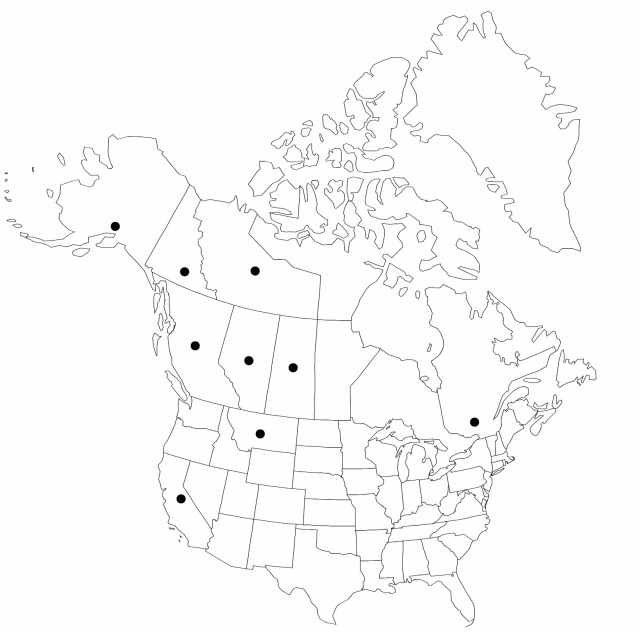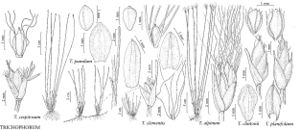Trichophorum pumilum
Vierteljahrsschr. Naturf. Ges. Zürich 66: 265. 1921.
Plants loosely cespitose; rhizomes long, slender. Culms grooved, terete, 5–14 cm, smooth. Leaves: basal sheaths brown; distal leaf-sheaths truncate to concave at mouth; blades 2–8.4 × 0.4–0.5 mm, much shorter than culms at flowering and fruiting. Inflorescences: spikelets 3–6-flowered, 3–4.6 × 1.7–2.8 mm; bracts shorter than spikelets, 1.6–2.5 mm, apex mucronate. Spikelets: scales brown, apex obtuse. Flowers: perianth bristles absent; anthers 0.8–1.5 mm. Achenes compressed trigonous to planoconvex, (1.2–) 1.4–1.9 × 0.8–1.2 mm.
Phenology: Fruiting summer (Jul–Aug).
Habitat: Moist to wet coniferous swamps, bogs, riverbanks, calciphile
Elevation: 20–1500 m [3500 m, Nepal]
Distribution

Alta., B.C., N.W.T., Que., Sask., Yukon, Alaska, Calif., Mont., Europe, c Asia
Discussion
North American plants have been distinguished as Trichophorum pumilum var. rollandii (Fernald) Beetle; differences from the Eurasian plants are elusive. The chromosome number in Europe is 2n = 78.
Selected References
None.
Lower Taxa
"shortened" is not a number.
